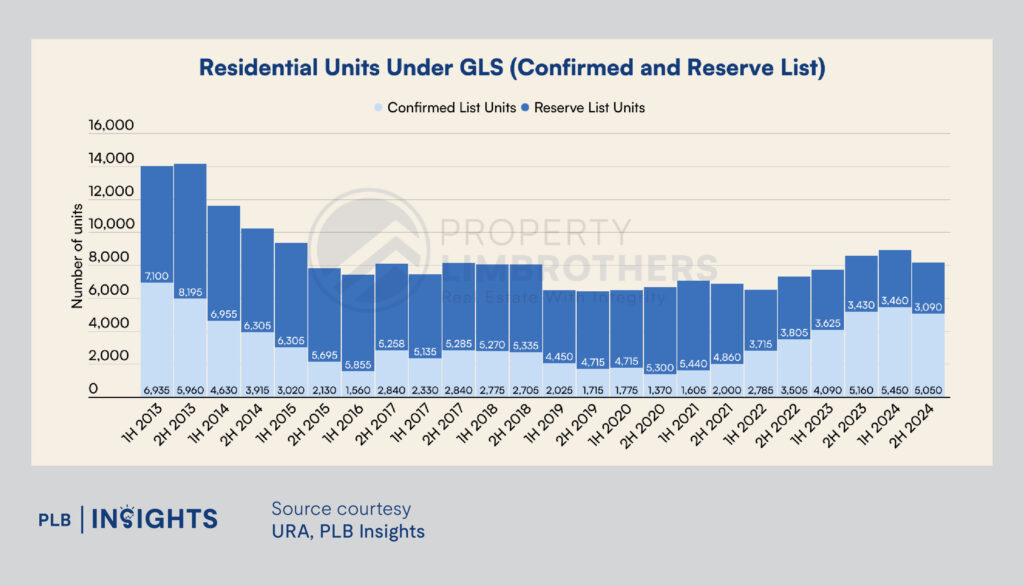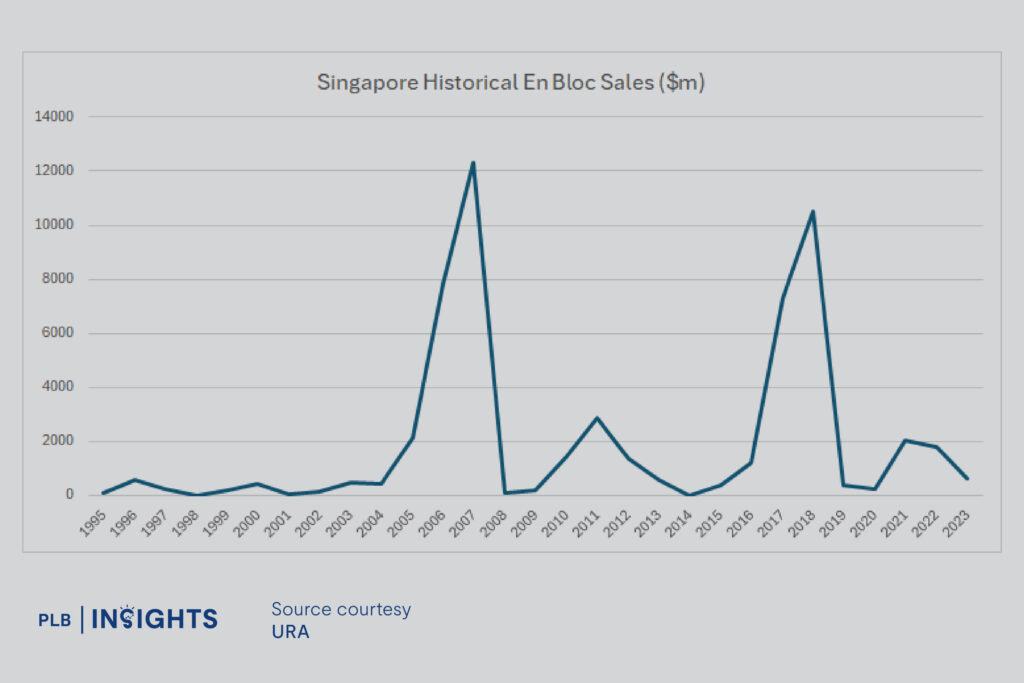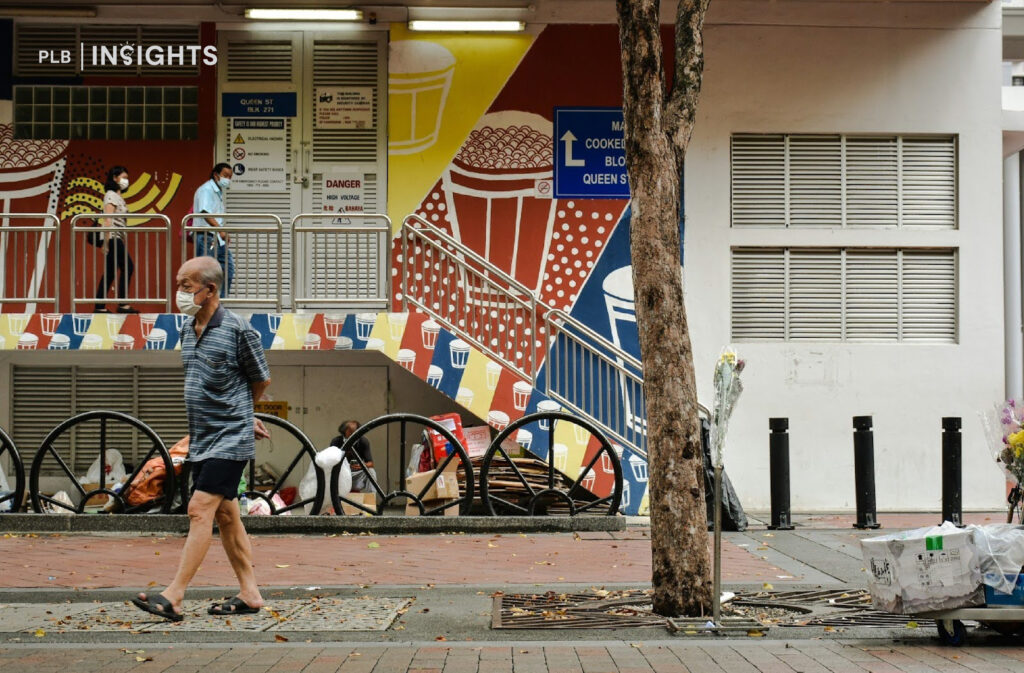
En bloc sales, once a cornerstone of Singapore’s vibrant real estate scene, used to generate widespread excitement with their promise of substantial financial gain. For many homeowners, the notion of an en bloc sale evoked visions of instant wealth, akin to winning a lottery. The possibility of receiving a windfall significantly above market value led to an overinflated optimism about the chances of a successful sale. This “strike-it-rich” mentality shaped much of the public perception surrounding en blocs, creating an environment where even the slightest hint of interest from developers sparked anticipation.
But beneath the surface of these headline-grabbing successes lies a less glamorous reality. Seasoned real estate investors and homeowners have witnessed an increasing number of en bloc deals falter, some of which collapsed despite initial enthusiasm. While successful en bloc transactions still occur, they are often overshadowed by the growing list of failed attempts. These failures are not always apparent to the broader public, as the focus tends to remain on the rare big wins that make news.
The reasons behind these failures are multifaceted and complex. From a macroeconomic perspective, shifting market conditions, cooling measures, and rising land costs have made developers more cautious, reducing their willingness to bid aggressively for en bloc properties. At the same time, the regulatory environment in Singapore has tightened, with higher requirements for collective sale approvals and stricter land use policies, both of which can dampen the momentum of en bloc deals.
Additionally, the interests of various stakeholders in an en bloc deal are not always aligned. Homeowners in ageing estates often disagree on the reserve price, the minimum amount they are willing to sell their property for. Older residents may see value in staying put, while younger homeowners, looking for a payout, may push for a sale. This internal friction can stall or completely derail the collective sale process, especially when it comes to securing the 80% consensus required by law.
As we look at the present state of the en bloc market, it’s clear that the golden age of en bloc sales may be behind us. While there was a period, particularly in the mid-2000s and mid-2010s, when en blocs were frequent and immensely profitable, the landscape today is far less predictable. Developers are becoming more selective, and government policies are increasingly geared toward cooling speculative property markets rather than encouraging collective sales.
This article seeks to delve deeper into these factors—economic, regulatory, and social—that have contributed to the slowdown of en bloc deals. By exploring why en bloc sales are failing more often and what lies ahead for Singapore’s property market, we aim to provide a comprehensive analysis of whether the en bloc market is truly dead for good, or if it’s simply experiencing a temporary lull before the next wave.

The Economic Headwinds of the En Bloc Market
One of the key reasons behind the en bloc market’s struggle in recent years lies in the broader economic landscape, particularly in the delicate balance between supply and demand in the residential property development sector. En bloc sales, which have historically been a prime source of land for developers, now find themselves competing directly with government land sales (GLS). This competition on the supply side is a crucial determinant of developers’ decision-making, as it affects their costs and, ultimately, their profit margins.
The demand side of the equation is shaped largely by consumer appetite for new residential launches and the overall market sentiment. When buyers are optimistic, sales of new developments thrive, creating an environment where developers are keen to replenish their land banks through either en bloc purchases or GLS tenders. However, when market sentiment is subdued, developers become cautious, focusing on clearing unsold units from past launches before committing to new land acquisitions. This cyclical nature of the market is something developers must constantly navigate.
On the supply side, developers arguably have more room to be strategic. Their decisions about which land plots to acquire, how to design and price new developments, and how to appeal to specific market segments are pivotal in determining the success of their projects. Factors such as the location of the land, the remaining lease, and the distribution of unit sizes can significantly influence their ability to target the right demographic and maximise sales. A developer’s reputation and track record play a role here as well; more established developers may have the luxury of being selective with their acquisitions, while newer entrants may feel pressure to accept less-than-ideal plots just to stay competitive.
Direct competition between GLS and en bloc sales is one of the defining features of the current market environment. Price is the most obvious factor, as it directly impacts a developer’s profit margins. GLS plots tend to come with more transparent pricing and fewer legal complications than en bloc sites, making them more attractive in times of economic uncertainty. En bloc sales, on the other hand, often come with higher risks—such as legal disputes, the need for expensive redevelopment, and collective sale processes—which can deter developers, especially if GLS sites offer comparable locations at a lower cost.
Location also plays a pivotal role. Developers are looking for land that aligns with their pipeline of future projects. For instance, older properties in prime districts may seem appealing, but if the cost of redevelopment and the remaining lease are too restrictive, they may opt for GLS sites that offer greater flexibility. Moreover, the size of en bloc sites and the number of units they can support may not always fit neatly into developers’ existing plans, especially if they’re targeting specific market segments.


An analysis of historical trends reveals that periods of high en bloc activity often coincide with a reduction in GLS supply, and vice versa. For example, the peak of en bloc sales in 2017 and 2018 occurred during a time when the GLS confirmed list for residential units was relatively low, creating a vacuum that developers sought to fill through collective sales. Conversely, when en bloc sales dwindled—such as in 2013 and 2024—it coincided with a higher volume of confirmed residential units under the GLS, providing developers with ample opportunities to acquire land without resorting to the complexities of en bloc purchases.
These economic headwinds—shaped by both supply-side competition and demand-side fluctuations—have played a significant role in the diminishing appeal of en bloc sales. While some developers may still find opportunities in en bloc sites, especially in niche or high-demand areas, the broader trend suggests that GLS sites are becoming the safer and more attractive option for many. As these economic factors continue to evolve, the en bloc market may find itself further squeezed, potentially signalling the end of its golden era.
Regulatory Restraints That Affect The En Bloc Market
The en bloc market in Singapore is particularly sensitive to regulatory frameworks, which can significantly influence both homeowners and developers. Over the years, the government has introduced various cooling measures aimed at stabilising the property market and preventing speculative bubbles. While these measures have been effective in maintaining market stability, they have also added layers of complexity that can deter en bloc sales.
For homeowners, regulatory restraints can present significant hurdles. One of the key deterrents is the restriction placed on private homeowners who are downsizing or seeking to purchase a resale HDB (Housing and Development Board) flat after an en bloc sale. Under current regulations, these homeowners face a mandatory 15-month wait before they are eligible to purchase a resale HDB unit. This can create a considerable inconvenience, especially for those looking for a seamless relocation plan. Without the ability to immediately buy a resale HDB, homeowners may have to consider more expensive private properties, which can reduce the attractiveness of en bloc deals for certain demographic groups.
In addition, the imposition of the Additional Buyer’s Stamp Duty (ABSD) further complicates the situation for homeowners looking to reinvest in property after an en bloc sale. The ABSD, which requires buyers to pay a tax on their second and subsequent properties, adds a financial burden that can delay or even deter homeowners from moving forward with a sale. For homeowners who are already navigating the challenges of relocation and dealing with the tight timeline typically imposed during an en bloc process, the added cost of the ABSD can significantly impact their decision to participate in an en bloc deal.
Developers, on the other hand, face their own set of regulatory constraints that can curb their enthusiasm for en bloc purchases. One of the key regulations affecting developers is the requirement to sell all the units in a new development within a set period of five years. Failure to meet this deadline can result in hefty financial drawbacks. This regulation pushes developers to be more selective in their acquisitions, prioritising land plots that are easier to develop and sell within the required timeframe.
Older properties, which have traditionally been attractive en bloc candidates due to their large land plots, may now find themselves at a disadvantage. Large plots typically require significant redevelopment, and developers may struggle to sell all the units within the stipulated timeline, particularly if market sentiment is tepid. As a result, developers tend to gravitate towards smaller, more manageable sites that fit within their existing project pipeline, where they can confidently meet regulatory deadlines.
The combination of these factors has changed the landscape of en bloc sales. Developers are not only more cautious but also less willing to bid aggressively, leading to lower offers for en bloc sites. This, in turn, affects the ability of en bloc committees to reach the reserve price needed to secure a sale. Homeowners may resist selling at a lower price, while developers are deterred by the additional risks imposed by regulations.
The interaction between cooling measures and developer obligations also has a ripple effect on the overall property market. For instance, during periods of increased ABSD and resale restrictions, developers may opt to participate more heavily in GLS, where there is more clarity and less risk compared to en bloc sites. This shift in preference further suppresses the en bloc market, as developers find GLS sites to be a safer bet for meeting regulatory requirements and ensuring profitability.
Ultimately, the tightening regulatory environment has created a situation where both developers and homeowners face significant barriers to en bloc sales. These constraints, coupled with market uncertainties, contribute to the growing sentiment that the golden era of en bloc sales may be over, or at the very least, significantly subdued.
The Social Death of En Blocs
Beyond economic and regulatory barriers, the en bloc market in Singapore faces mounting social challenges that are gradually contributing to its decline. These social factors—ranging from demographic shifts to the rising costs of living—play a significant role in shaping the attitudes of both homeowners and developers, leading to a general dampening of enthusiasm for en bloc sales.
An Ageing Population and the Inconvenience of Relocation
One of the most prominent social dynamics affecting the en bloc market is Singapore’s ageing population. Many of the homeowners in older estates that are prime candidates for en bloc sales are retirees or elderly individuals who have lived in their homes for decades. For these homeowners, the prospect of an en bloc sale is not just a financial decision but a deeply personal one. The upheaval of relocating—especially given the scarcity of affordable housing options—can be overwhelming. This demographic is less incentivized to sell, as the logistics of moving, finding a new home, and adapting to a different environment can feel like too much of a burden, even if the financial offer is attractive.
In addition, the shrinking availability of reasonably priced replacement homes creates further reluctance. For elderly homeowners, the comfort and familiarity of their current home often outweighs the appeal of an en bloc windfall. The added complexities of managing the post-sale relocation process—including the 15-month restriction on purchasing resale HDB flats and the costs associated with moving—further reduce their motivation to agree to an en bloc sale.

Inflationary Pressures and the Cost of “Selling High, Buying High”
For younger homeowners, who might otherwise be more inclined to support en bloc deals, inflationary pressures and rising renovation costs are creating additional deterrents. In today’s market, selling high doesn’t guarantee a significant profit when buying high becomes the norm. Younger homeowners who sell their en bloc units at a premium often find that the cost of purchasing a new home, particularly in the same location or a comparable district, has skyrocketed as well. The profits from an en bloc sale may quickly evaporate when used to cover the high prices of new properties, renovations, and other transaction costs.
Furthermore, rising renovation costs mean that even if a homeowner does manage to find a reasonably priced replacement home, the cost of making it livable—especially in older properties—can be prohibitive. With inflation driving up the cost of construction materials and labour, renovation budgets often exceed initial estimates. This reality discourages many younger homeowners from opting into an en bloc sale, as the financial gain no longer outweighs the risks and costs of buying a new home in an inflated market.
The Widening Price Disparity Between GLS and En Bloc Markets
Another social dimension to consider is the increasing disparity between GLS and en bloc markets, exacerbated by government policies aimed at keeping housing prices under control. With the government releasing GLS sites at prices that are more palatable for developers, many prospective buyers find that these new developments offer better value for money than en bloc redevelopments. As a result, homeowners in older estates may find that their units are valued less attractively in the en bloc market, making the prospect of a sale less appealing.
Developers, facing higher risks and potentially tighter profit margins in the en bloc market, are more likely to focus on GLS sites where there is less regulatory red tape, fewer redevelopment costs, and clearer profit margins. This shift in preference further discourages homeowners from pushing for en bloc deals, as they realise that developers are not willing to bid as aggressively as they once did. The widening gap between GLS and en bloc prices serves as a disincentive for both sides, eroding the once-lucrative appeal of en bloc sales.
The Accumulation of Failed En Bloc Attempts
Finally, consecutive failed en bloc attempts compound the challenges for both homeowners and developers. As more collective sale attempts fall through, homeowners become increasingly disillusioned with the process. Failed en bloc sales often leave residents in limbo, prolonging uncertainty and sometimes leading to discord within the estate. After several failed attempts, many homeowners grow weary of the long, drawn-out process and may lose interest in pursuing future en bloc bids.
For developers, failed en bloc attempts also have a chilling effect. As the regulatory, economic, and social costs of securing an en bloc site increase, the risks begin to outweigh the potential rewards. Developers are unlikely to invest resources in repeatedly negotiating with estates that have a history of failed en bloc sales, especially when there are easier and more profitable alternatives available through GLS.

The End of an Era?
Together, these social factors create an environment where en bloc deals are becoming less and less attractive. An ageing population resistant to relocation, the economic reality of selling high and buying high, and the growing divide between GLS and en bloc markets all contribute to a market where en bloc deals are seen as more trouble than they are worth. As failed attempts pile up, both homeowners and developers may increasingly turn away from en bloc sales, signalling a potential social death for this once-thriving market.
If you are exploring further options and need a second opinion, feel free to reach out to us here. Our team of experienced consultants stand ready to help you navigate the volatile market. See you in the next one!







